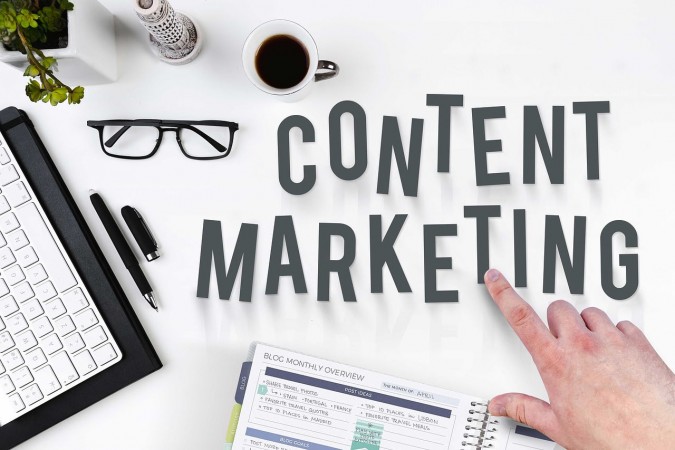Writing good content is hard enough, but what’s the point of hosting the best articles in the world if you have no content strategy to reach your audience? There are so many ways to grab your readers’ attention and so many different types of content. The first thing you need to do to plan an effective audience-focused content strategy is defining what goals you want to accomplish with your content. Each article should be part of a plan, follow a precise narrative, leaving your audience waiting for the next part of the “story” you’re telling.
This guide will walk you through what distribution channels you should use to achieve your goals, and how to generate the right content that will perform optimally in them.
Syndicated Content
If your brand is relatively new or still not known enough, the first thing it needs is to gain some exposure. Brand awareness campaigns are done by showing your audience how your product or service may solve their problems. Syndicated content is great to reach a lot of people at once with daily content that covers broad, news-worthy topics. Maybe it’s not the best for SEO purposes since most magazines will provide you with just no-follow links, but it’s still an amazing way to bring some traffic to your site. To avoid struggling with duplicate content issues, however, make sure that your syndication partners will provide a canonical tag back to your site.
Syndicated content must target topics that have a timely slant to it, such as “The best destinations to visit in 2019” or an article addressing a specific event that already hit the news “How to prepare for the upcoming presidential elections.” The title itself is probably the most important part of this type of content – people will click on it only if it’s catchy and interesting enough. Quality must be high – make sure that the article’s body stays relevant with the title, and that you answer the headline entirely. Length-wise, our advice is to keep it long enough to discuss the subject exhaustively, but not too long as to bore your audience. Anything between 400 to 800 words is just okay.
Guest Posts and Sponsored Content
Sponsored content is a good way to bring some relevant traffic to your website, especially if it’s engaging enough and, more importantly, featured in the right place. Guest posts are the bread and butter of any content strategy since they’re both good to increase brand awareness and add some always-useful link juice to your website. There are a lot of sites that take guest posts, and they don’t need to be in the exact niche of your product. What really matters is that you can reach those audiences that are ideally interested in what you have to offer. For example, you may advertise an online medical school program in a medicine website rather than in the usual education website, knowing that many people who read that site may find it interesting or relevant.
Things become a little more complicated when your articles are tagged as “sponsored content,” however. When visitors see that content is tagged as “sponsored” they may become more skeptical of it (for obvious reasons). First, you need to avoid being overly promotional – after all it’s very clear already that this content is a promotion for your brand, and you don’t want to reinforce that further. If your content is light enough and avoids taking itself too seriously, instead, you may convince even the most skeptical reader into giving it a chance. You can grab your readers’ attention with a few funny jokes, or simply provide some really interesting advice to establish trust with your audience.
Landing Pages
Landing pages are exactly what they seem – places where people land after they clicked on some paid advertising. And when they do, they already know what to expect since they searched for that keyword in the first place. This means that you’re showing your content in front of a pre-qualified audience, and you don’t need to be sneaky about your message at all. Needless to say, visual content such as videos or images work very well with landing pages, together with engaging, keyword-aligned headlines and call-to-actions.
However, you need to target your content to the keywords you’re bidding on and follow the rules set by Google, Bing, Facebook, YouTube, etc. In fact, you must be sure that your content has a high “quality score” according to their rules, which take into account several factors such as ad text relevance, expected CTR, and relevance to the query.
Blog Posts
Everybody loves blog posts, especially Google (and SEO experts). Blog posts are the simplest, most effective way to improve your organic rankings and acquire featured snippets. They’re easy to produce at scale, and an effective way to show your readers that you’re an authority in your own industry. Blog posts are a great place to showcase all your knowledge, and they can be aimed at different audiences. They are useful to create the so-called “funnel,” grabbing prospects during the discovery phase until they become fully-fledged customers.
Blog posts come in many different shapes and sizes, ranging from Q&As to how-to articles, stories told from a customer perspective, or just plain old lists. The bottom line is that YMMV, especially for the length of the articles, which varies a lot depending on your audiences and brand. The web is full of useful keyword research tools that could provide you with all the keywords and topics you need for your blog posts. Usually, targeting specific long-tail keywords tend to perform better – you got a higher chance to capture a featured snippet.
Conclusion
Of course, there are a lot more types of content you may write other than just this handful we featured here. What really matters though, is that they’re all written well so that they feature useful information for your readers, engaging to read, and more importantly, never boring!

Recent Comments